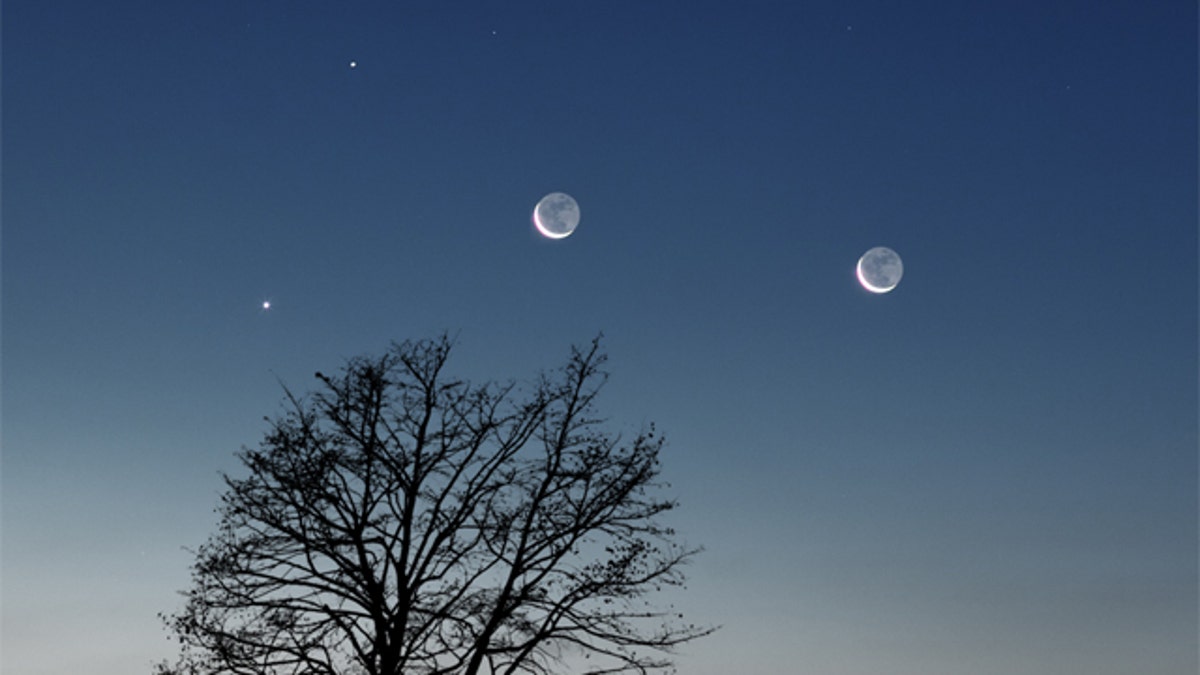
Two moons? Astronomer says yes.
Maybe Frank should have sang "Fly Me to the Moons."
Scientists studying satellites orbiting the planet have come to an astounding conclusion: Earth has multiple moons at any given time, the MIT Technology Review reported.
Mikael Granvik, along with colleagues at the University of Hawaii, first discovered a mysterious body orbiting the Earth in 2006. The object -- or RH120 as it was known -- turned out to be a tiny asteroid just a few meters across. Moreover, it was a natural satellite just like our moon.
Since then, the researchers have been studying how this “Earth-Moon” gravitational system captures bodies into its orbit while also modelling their frequency and duration. The asteroid RH120 for instance was captured in September 2006 and orbited the planet until June 2007.
But how often do these “temporary moons” actually occur? Quite often, the astronomers found.
"At any given time, there should be at least one natural Earth satellite of one-meter diameter orbiting the Earth," Granvik, Jeremie Vaubaillon and Robert Jedicke wrote in "The Population of Natural Earth Satellites," a paper published in online physics journal ArXiv.org. In other words, at this very moment, our planet likely has a secret moon orbiting us (no word as to whether it's a blue moon). Such objects typically stay for about 10 months, making three revolutions around the planet.
Given that these tiny captured orbitals are only a meter or two in diameter, it may seem a stretch to officially call them “moons” -- but the scientific implications of the discovery are vast. Outside of assisting private spaceflight and exploring deep space, the other major thing on NASA’s list of things to do is send astronauts to an asteroid.
"The scientific potential of being able to first remotely characterize a meteoroid and then visit and bring it back to Earth would be unprecedented," the research team concluded.
Read more about Earth's second moon at the MIT Technology Review.




















